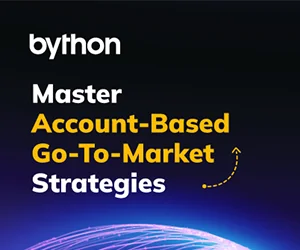Traditional investment strategies are being challenged by technological advancements, shifting economic conditions, and changing investor preferences. As executive finance professionals, it’s crucial to stay ahead of these trends and adapt our approaches to maximize returns while managing risks effectively. This blog post explores modern investment strategies that are reshaping the financial world and offers insights on how to navigate this new terrain.
- Evolving Investment Needs & Tech’s Role in Finance
- AI-Powered Investment Tools & Emerging Opportunities
- Managing Market Risks & ESG-Focused Investments
- Expanding Beyond Traditional Assets & Regulatory Shifts
- Custom Investment Plans & Strategy Optimization
- Financial Advisors Today & The Future of Investing
Understanding Modern Investment Needs
The financial ecosystem has undergone significant transformations in recent years. Globalization, digital disruption, and unprecedented economic events have reshaped the way we approach investing. The COVID-19 pandemic, for instance, accelerated many existing trends and introduced new challenges, highlighting the need for agile and Modern investment strategies.
Key factors driving changes in investment strategies include:
- Increased market volatility
- Low interest rate environments
- Geopolitical uncertainties
- Rapid technological advancements
- Shifting demographic trends
- Growing emphasis on sustainability
These factors necessitate a reevaluation of traditional investment approaches and the adoption of strategies that are better suited to navigate the complexities of modern financial markets.
The Impact of Technology on Investing
Technology has revolutionized every aspect of investing, from research and analysis to execution and portfolio management. Some key technological innovations include:
-
Algorithmic Trading
High-frequency trading and complex algorithms now dominate market movements, executing trades at speeds impossible for human traders. This has increased market efficiency but also introduced new forms of volatility and risk.
-
Robo-Advisors
Automated investment platforms use algorithms to create and manage portfolios, offering low-cost, accessible investment options. While they provide convenience, they may lack the nuanced approach required for complex financial situations.
-
Fintech Innovations
Mobile trading apps, blockchain technology, and peer-to-peer lending platforms have democratized investing, creating new opportunities and challenges for traditional financial institutions.
As finance professionals, it’s crucial to understand these technologies, their implications, and how to leverage them effectively while being mindful of their limitations and potential risks.
( Also Read: Investing in Business: Key Insights )
Emerging Investment Vehicles
The modern investment landscape offers a variety of new asset classes and investment vehicles that were not widely available or even existent a decade ago. These include:
-
Cryptocurrencies
Digital currencies like Bitcoin and Ethereum have gained significant attention. While they offer potential for high returns, they also come with substantial volatility and regulatory uncertainties.
-
Non-Fungible Tokens (NFTs)
These unique digital assets represent ownership of specific items or content. The NFT market has seen explosive growth, particularly in the art and collectibles sectors, but its long-term viability remains to be seen.
-
ESG Funds
Environmental, Social, and Governance (ESG) focused investments have gained traction as investors increasingly prioritize sustainability and social responsibility. These funds aim to generate returns while supporting companies that meet specific ESG criteria.
While these new investment vehicles offer diversification opportunities, they also require careful due diligence and risk assessment. It’s essential to thoroughly understand their underlying mechanisms, regulatory landscape, and potential impact on overall portfolio performance before incorporating them into investment strategies.
Integrating Artificial Intelligence in Investment Decisions
Artificial Intelligence (AI) and Machine Learning (ML) are transforming investment decision-making processes. These technologies offer several advantages:
-
Enhanced Data Analysis
AI can process vast amounts of data, including unstructured data from news sources and social media, to generate insights that human analysts might miss.
-
Predictive Analytics
Machine learning models can identify patterns and trends to forecast market movements and asset performance.
-
Risk Management
AI-powered tools can continuously monitor portfolios, identifying potential risks and suggesting hedging strategies in real-time.
-
Personalized Portfolio Management
AI can tailor investment strategies to individual client profiles, considering factors like risk tolerance, financial goals, and market conditions.
However, it’s crucial to remember that AI and ML are tools to augment human decision-making, not replace it entirely. The most effective strategies combine technological capabilities with human expertise and judgment.
Navigating Market Volatility and Uncertainty
In an era of increased market volatility, developing robust strategies to manage risk is paramount. Consider the following approaches:
-
Dynamic Asset Allocation
Regularly rebalance portfolios based on changing market conditions and risk assessments.
-
Options Strategies
Use options to hedge against potential downturns or to generate income in sideways markets.
-
Alternative Investments
Incorporate non-correlated assets like real estate or private equity to diversify risk.
-
Stress Testing
Regularly conduct scenario analyses to understand how portfolios might perform under various market conditions.
-
Liquid Alternatives
Consider investment strategies that aim to provide uncorrelated returns, such as long/short equity or market-neutral funds.
The key is to build resilient portfolios that can withstand market shocks while still capturing upside potential.
Sustainable and Socially Responsible Investing
Environmental, Social, and Governance (ESG) factors have moved from the periphery to the mainstream of investment decision-making. This shift is driven by:
- Increasing awareness of climate change and social issues
- Regulatory pressures and reporting requirements
- Evidence suggesting that ESG integration can enhance long-term returns
Implementing ESG Strategies
-
Negative screening
Excluding companies or sectors that don’t meet specific ESG criteria
-
Positive screening
Actively seeking investments in companies with strong ESG performance
-
Impact investing
Targeting investments that generate measurable social or environmental benefits alongside financial returns
As finance professionals, it’s crucial to understand how to effectively integrate ESG factors into investment analyses and decision-making processes. This includes developing robust methodologies for assessing ESG risks and opportunities and understanding their potential impact on financial performance.
Diversification: Beyond Traditional Assets
While diversification has always been a cornerstone of sound investment strategy, the modern landscape offers new ways to spread risk and capture returns. Consider expanding beyond traditional stocks and bonds to include:
-
Real Estate Crowdfunding
Platforms that allow investors to participate in commercial real estate projects with lower capital requirements.
-
Commodities
Direct investments in physical commodities or commodity-linked securities can provide inflation protection and portfolio diversification.
-
Private Equity
While traditionally reserved for institutional investors, new platforms are making private equity more accessible to a broader range of investors.
-
Infrastructure Investments
Projects like renewable energy installations or transportation networks can offer stable, long-term returns.
-
Peer-to-Peer Lending
Online platforms that connect borrowers with investors, offering potentially higher yields than traditional fixed-income investments.
The key is to carefully assess the risk-return profile of these alternative investments and how they fit within the overall portfolio strategy.
Adapting to Regulatory Changes
The regulatory landscape for investments is constantly evolving, with new rules and requirements emerging in response to market developments and societal concerns. Key areas to monitor include:
-
Data Protection and Privacy
Regulations like GDPR and CCPA have implications for how financial data is collected, stored, and used.
-
Cryptocurrency Regulations
As digital assets gain prominence, regulators are developing frameworks to govern their use and trading.
-
ESG Reporting Requirements
Many jurisdictions are implementing mandatory ESG disclosures for companies and investment products.
-
Fiduciary Standards
Ongoing debates about the extent of fiduciary responsibilities for different types of financial advisors and institutions.
Staying informed about these regulatory changes is crucial. Consider establishing a dedicated team or process to monitor regulatory developments and assess their impact on investment strategies and operations.
Personalized Investment Strategies
The one-size-fits-all approach to investing is becoming obsolete. Modern strategies emphasize personalization, tailoring investment approaches to individual investor profiles. This involves:
-
Goals-Based Investing
Aligning investment strategies with specific financial objectives, whether it’s retirement planning, wealth preservation, or funding a major purchase.
-
Risk Profiling
Using sophisticated tools to assess an investor’s risk tolerance and capacity, ensuring that portfolios align with their comfort level.
-
Behavioral Finance Insights
Incorporating understanding of cognitive biases and emotional factors that influence investment decisions.
-
Life-Stage Appropriate Strategies
Adjusting investment approaches based on an investor’s age, career stage, and life circumstances.
-
Tax-Efficient Investing
Tailoring strategies to optimize after-tax returns based on an investor’s specific tax situation.
As finance professionals, developing the capability to create and implement these personalized strategies is crucial for meeting the evolving needs of sophisticated clients.
Evaluating and Adjusting Your Strategy
In a rapidly changing environment, regular evaluation and adjustment of investment strategies is essential. Consider implementing the following framework:
-
Set Clear Benchmarks
Establish appropriate performance metrics aligned with investment goals.
-
Regular Performance Reviews
Conduct thorough analyses of portfolio performance, ideally on a quarterly basis.
-
Market Environment Assessment
Regularly evaluate how macroeconomic conditions and market trends might impact your strategy.
-
Risk Management Check
Ensure that risk levels remain within acceptable parameters and adjust as necessary.
-
Rebalancing
Regularly rebalance portfolios to maintain target asset allocations.
-
Strategy Evolution
Be prepared to adapt strategies in response to significant market shifts or changes in investor circumstances.
Remember, the goal is not to react to every market movement, but to make thoughtful, data-driven adjustments that keep strategies aligned with long-term objectives.
The Role of Financial Advisors in the Modern Age
Despite the rise of automated investment tools, human financial advisors continue to play a crucial role, especially for high-net-worth individuals and complex financial situations. Modern financial advisors must:
-
Leverage Technology
Use advanced tools for portfolio analysis, risk assessment, and client communication.
-
Provide Holistic Advice
Offer comprehensive financial planning that goes beyond investment management to include tax planning, estate planning, and risk management.
-
Navigate Complexity
Help clients understand and navigate complex investment vehicles and strategies.
-
Emotional Intelligence
Provide behavioral coaching to help clients stick to their long-term plans during market turbulence.
-
Continuous Learning
Stay updated on market trends, new investment vehicles, and evolving best practices.
As executive finance professionals, consider how to effectively combine human expertise with technological capabilities to provide superior value to clients.
Future Trends in Investing
Looking ahead, several trends are likely to shape the future of investing:
-
Increased Use of AI and Machine Learning
These technologies will become more sophisticated, potentially leading to more accurate predictive models and personalized investment strategies.
-
Blockchain and Decentralized Finance (DeFi)
These technologies could revolutionize how financial transactions are conducted and recorded.
-
Climate Change Investments
Opportunities and risks related to climate change will likely become a central consideration in investment strategies.
-
Demographic Shifts
Aging populations in developed countries and growing middle classes in emerging markets will create new investment dynamics.
-
Geopolitical Realignments
Shifting global power dynamics may lead to new economic alliances and investment opportunities.
Staying ahead of these trends and understanding their potential impact will be crucial for developing effective long-term investment strategies.
Final Thoughts
The modern investment landscape offers both exciting opportunities and significant challenges. As executive finance professionals, our role is to navigate this complex terrain, leveraging new technologies and strategies while managing evolving risks. By staying informed, embracing innovation, and maintaining a focus on long-term objectives, we can develop investment strategies that are truly fit for the modern age.
Remember, the key to success in this rapidly changing environment is adaptability. Continuously evaluate and refine your strategies, stay open to new ideas, and always keep your clients’ best interests at the forefront of your decision-making. The future of investing is here, and it’s up to us to shape it.








